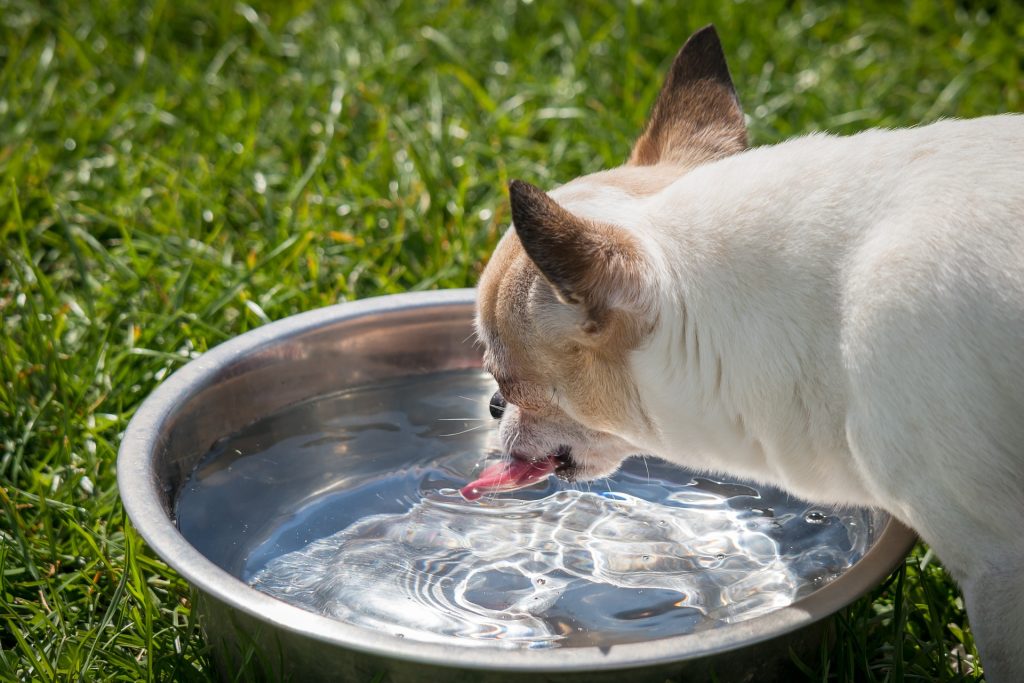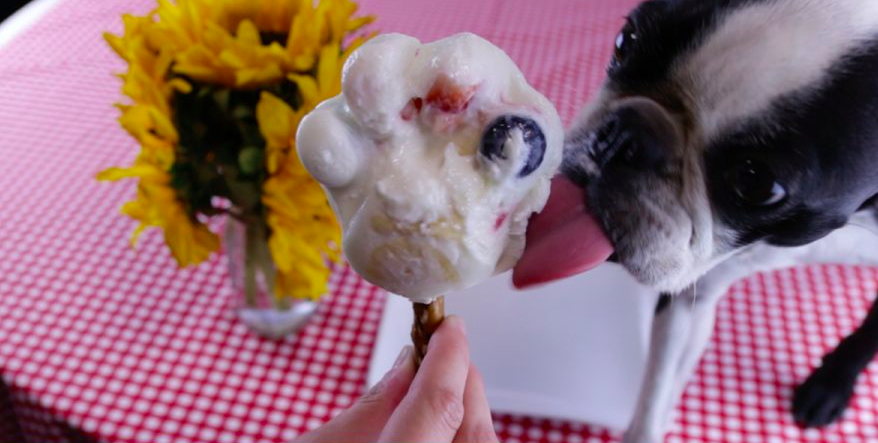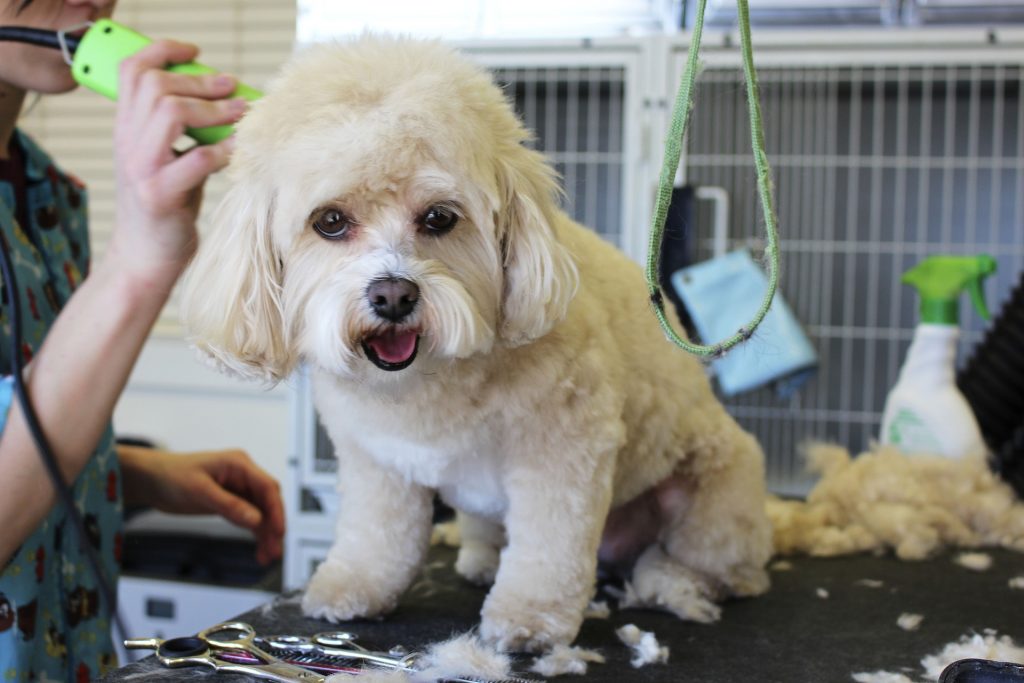Whether fluffy or sleek, most dogs can be healthy and active in the heat, provided they get plenty of access to drinking water and shade.
That said, certain dog breeds have a greater appreciation for hotter climates—and all our pals could benefit from a little extra TLC in the summertime.

Tips for keeping cool through the dog days of summer
If you see the mercury rising, here are some tips to keep your canine cool:
- Offer an ice pack or wet towel to lie on.
- Add ice cubes to the water dish.
- Offer access to a paddling pool with shallow, cool water.
- Offer access to cool shade by stringing up tarpaulin, cloth, or use a shading screen.
- Bring a collapsible water dish on your walks.
- Replace a portion of their regular diet with canned food.
- Avoid walking on hot pavement, and consider booties to protect their toes.
- Early morning or evening playtimes, exercise, and walks are best.
- Give your dog some home-made frozen treats.

HOME-MADE “ICE LICKS” ARE A FUN WAY TO KEEP DOGS BUSY AND COOL.
The best hot weather dog breeds
In general, dogs with thin, short coats—think: beagles, chihuahuas, and Dalmatians—do best in the heat. Dogs with short noses and thick coats are less comfortable as temperatures rise.
Dog breeds originating in hot climates were born ready to face the heat: basenjis and Pharaoh hounds, to name a few. High-speed hounds used for coursing and racing, mostly from the sighthound group, are all naturally gifted when it comes to beating the heat. Their long noses cool the air, and their big lungs and hearts distribute oxygen through their bodies. Salukis, greyhounds, and whippets are all members of this speedy group.
Climate-sensitive breeds and conditions
While most any dog can tolerate the hot summer months with appropriate hydration and environment management, some dogs are just going to have a harder time.
All snub-nosed or brachycephalic dogs have a harder time regulating their temperatures due to their shorter nasal passages. Bulldogs, pugs, and Boston terriers are more sensitive to rising temperatures.

Other dogs that need special attention during a heat wave include giant breed dogs as well as elderly, obese, or diabetic animals.
Heatstroke in dogs: know the signs
- Raised temperature (38.6° Celsius is normal)
- Rapid breathing and panting
- Excess salivation and thickened saliva
- Fatigue or depression
- Muscle tremors
- Staggering
If you spot these signs, get your dog inside and contact your vet.
Wrap your dog in cold wet towels, especially the underarm/belly/groin area. A fan may be used on the dog during the cooling process.
Check your dog’s temperature every five minutes and end the cooling treatment when the temperature is down to 39.4° C. Avoid cooling too rapidly to avoid shock. Allow access to cool water, but don’t force your dog to drink. Your vet may administer IV fluids if dehydration is a concern.
Dehydration in dogs: know the signs
- Sunken eyes
- Lethargy
- Dry mouth
- Depression
- Gently pinch a fold of skin at the top of the neck. Is it slow to snap back?
Not all signs of dehydration are easy to detect. If you suspect your dog may be dehydrated, a trip to the vet is recommended.
Offer clean cool water. Try different bowls, adding a splash of carrot juice, chicken broth, or pieces of a favourite fruit to one of the bowls to encourage drinking. Some dogs enjoy a few ice chips in their water dish.

To shave or not to shave… Is that your question?
If your furry friend has a double coat like mastiffs, spitz, or terrier types, you may be tempted to simply shave off all that fuzz in hopes of keeping them cool. Before you break out the razor, you should know there can be several drawbacks to this solution, including a sudden lack of insulation and decreased sun protection.
Additionally, because longer guard hairs have a different growth cycle than inner insulation hairs, it can take years for some dogs to regain their natural appearance.
Do not leave your dog in the car
Pets can die inside hot cars, even if the windows are cracked. What feels like a mild day outside won’t feel so mild inside the car, so never leave your dog in the car if it’s warm outside. Temperatures can soar rapidly inside the small, insulated space. According to the RSPCA when it is 22°C outside it can reach an unbearable 47°C in a car within an hour. These temperatures can be dangerous to humans for extended periods, but they’re even more harmful to dogs. If you see a dog in distress in a hot car, dial 999.
Kiki Kane is a canine chef, professional blogger, and lifelong animal lover owned by a Frenchie-Boston mix and a geriatric kitty. As a dog chef and member of Rover's Dog People Panel, she creates original dog-friendly recipes for the web series Kiki's Canine Kitchen.
No comments:
Post a Comment